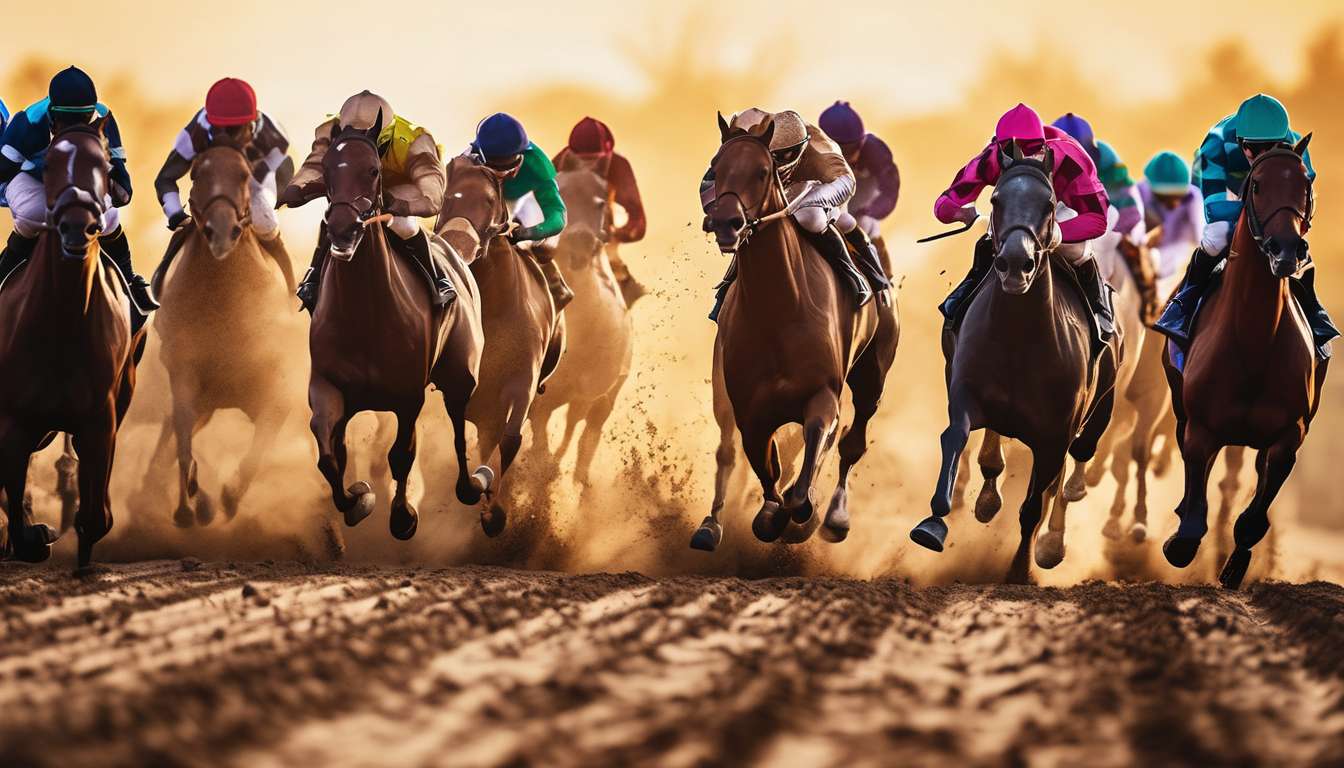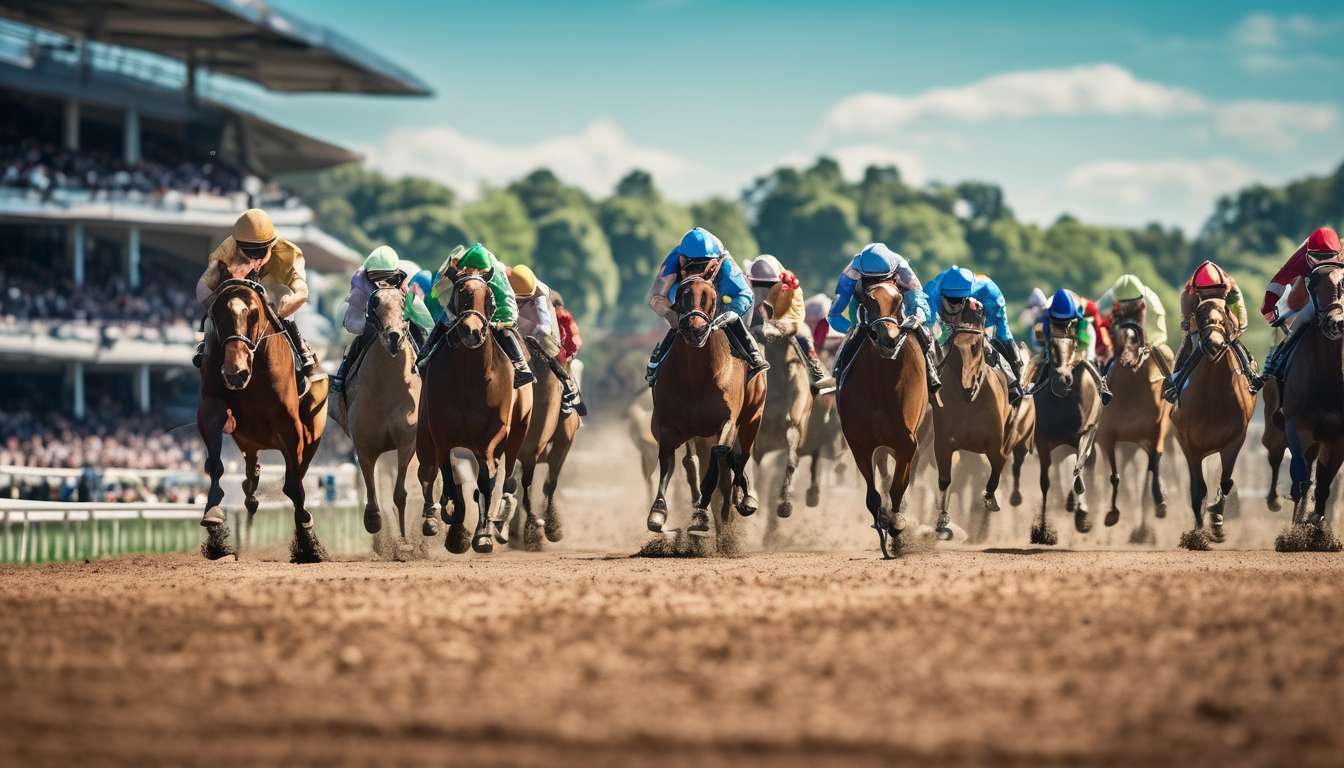We find ourselves at the intersection of tradition and innovation when it comes to horse racing. The thrill of the race and the elegance of the horses have long captured our collective imagination. However, as enthusiasts and bettors, we continuously seek ways to enhance our understanding and increase our chances of success.
In this article, we delve into the art and science of horse betting through the analysis of pace figures, a tool that has rapidly gained traction among savvy bettors. Together, we will explore nine insightful predictions that leverage these figures, offering a fresh perspective on how races might unfold.
By examining the pace of each contender, we can:
- Uncover patterns
- Anticipate performances with greater accuracy
As we embark on this journey, we invite you to join us in discovering how pace figures can transform our betting strategies. This approach has the potential to lead us to victory in the exhilarating world of horse racing.
Identifying Early Speed Contenders
To identify early speed contenders, we analyze pace figures to determine which horses are likely to take the lead in the initial stages of a race.
Key aspects of this analysis include:
- Dissecting past performances to understand a horse’s ability to set the tempo.
- Identifying horses that consistently show early speed and maintain it under pressure.
It’s not just about numbers; it’s about feeling the pulse of the race as a community of bettors. Together, we dive into the data, deciphering which speed contenders have the edge.
Understanding the race set-up is crucial. This is not just an individual endeavor; it’s a shared pursuit to spot those frontrunners. This collective analysis fosters a sense of camaraderie among us, as we anticipate how the race might unfold.
By focusing on pace figures, we can:
- Better predict which horses will dominate the front.
- Enhance our betting strategy.
- Strengthen our shared passion for horse racing.
Predicting Late-Running Surges
In our quest to predict late-running surges, we focus on analyzing stamina and finishing strength to identify which horses are poised to excel in the race’s final stages.
We’re not just looking for speed contenders who start strong, but rather those with the endurance to capitalize on the race set-up as it unfolds. Pace figures become our trusted allies in this endeavor, revealing a horse’s capability to maintain or even increase speed when others falter.
We study past performances, seeking patterns where horses have consistently shown resilience in the homestretch. This isn’t just about numbers; it’s about understanding the essence of the athlete beneath the saddle.
- By pinpointing horses that thrive in grueling conditions, we build a community of bettors who value insight over mere luck.
Together, we dissect the dynamics between early pace and late stamina, ensuring we’re aligned in our predictions.
- By sharing our findings, we strengthen our collective ability to anticipate those thrilling, last-minute surges.
Spotting Potential Front-Runners
Identifying Potential Front-Runners
Identifying potential front-runners hinges on our ability to analyze early speed patterns and assess which horses are likely to dominate from the start. We delve into pace figures to identify speed contenders that can set the tone of the race.
Key Indicators of Speed Contenders:
- Consistently posting high early pace figures
- Proven history of breaking swiftly
- Ability to maintain their lead
When we see a horse consistently posting high early pace figures, we know it’s a candidate to take the lead right out of the gate. This insight allows us to anticipate the race set-up and make informed betting decisions, which brings a sense of camaraderie as we navigate this complex world together.
Focus on Proven Early Speed:
By focusing on horses with proven early speed, we can spot those that might control the pace. Let’s pay attention to past performances where contenders have broken swiftly and maintained their lead.
In doing so, we create a shared understanding of which horses are likely to front-run. Our collective knowledge and analysis strengthen our bets, anchoring our community in the exciting and unpredictable realm of horse racing.
Analyzing Pace Variations
Analyzing pace variations can significantly enhance our understanding of a horse’s performance throughout a race. By examining pace figures, we identify how horses adapt to different race setups, providing insight into their strengths and weaknesses. It’s not just about who runs fastest but who maintains or changes speed effectively when the race demands it.
Key Insights from Pace Variations:
-
Adaptability to Race Set-Ups: By observing pace variations, we discover which horses can handle the pressure of altering speeds. This helps us predict which horses can sustain their performance from start to finish.
-
Response to Race Conditions: Pace figures highlight how a horse responds to different race conditions. Some horses thrive in fast-paced situations, while others excel when the pace slows. Recognizing these patterns is crucial for anticipating possible outcomes.
Benefits of Understanding Pace Variations:
-
Informed Betting Decisions: By understanding how horses adapt to various pace scenarios, we can make more informed betting decisions.
-
Enhanced Strategies: Sharing insights and strategies with fellow enthusiasts creates a sense of camaraderie. Together, we can uncover these intricacies to enhance our betting strategies.
In summary, pace variations offer valuable insights into a horse’s adaptability and performance, leading to more strategic predictions and betting decisions.
Understanding Closing Speed Potential
Understanding Closing Speed Potential
Understanding a horse’s closing speed potential is crucial for evaluating its ability to finish strong in the final stretch of a race.
When we analyze pace figures, we can identify:
- Horses likely to be speed contenders
- Horses that might falter
By examining their past performances, we gain insights into their closing capabilities. It’s not just about raw speed; it’s about how they manage their energy throughout the race.
Community Insights
In our community of horse racing enthusiasts, we recognize that a horse with excellent closing speed can surprise everyone, especially in a race set-up that favors late runners.
By focusing on pace figures, we:
- Uncover the hidden strengths of potential closers
- Feel like part of an exclusive group with insider knowledge
When we spot a horse that consistently shows strong finishes, it becomes a contender we can rally behind. We are united in our confidence that it might outperform others in the final moments of the race.
Evaluating Mid-Race Energy Distribution
To truly assess a horse’s performance, analyzing how it distributes its energy throughout the middle stages of a race is essential. Understanding this energy distribution:
- Helps connect better with fellow race enthusiasts.
- Fosters a sense of community in our shared passion.
By examining pace figures, we can:
- Identify horses that manage their energy efficiently mid-race.
- Set them apart as strong speed contenders.
In the heart of the race, a horse’s ability to maintain consistent speed without depleting its reserves is crucial. Contenders who master energy conservation often thrive, especially when the race setup demands tactical shifts. It’s akin to watching a symphony where each note is perfectly timed and placed.
We, as a community, thrive on these insights, using them to:
- Predict outcomes.
- Strategize effectively.
By understanding mid-race energy distribution, we’re not just spectators; we become part of a dynamic process that brings us closer to the thrilling world of horse racing.
Projecting Race Set-Up Scenarios
Understanding various race set-up scenarios allows us to anticipate how different horses might perform under specific conditions. By analyzing pace figures, we can identify which horses are likely to take the lead and who might excel in the closing stages. This shared knowledge helps us feel connected as we navigate the intricacies of horse betting together.
In any race set-up, speed contenders play a crucial role. These are the horses that typically start strong, setting the early pace. By recognizing them, we can better predict the overall flow of the race:
- Will it be a fast-paced contest favoring closers?
- Or will speed horses maintain their lead to the finish?
Our collective understanding of pace figures gives us insight into these dynamics.
When we project race set-up scenarios, we’re not just guessing outcomes; we’re building a community of informed bettors. Together, we can:
- Make more confident predictions.
- Enjoy the thrill of the race, knowing we’ve done our homework.
Uncovering Tactical Advantages
By analyzing race dynamics and horse tendencies, we can uncover tactical advantages that sharpen our betting strategies.
Our community thrives on shared insights, and understanding these nuances empowers us all.
Pace Figures and Race Unfolding:
- Delving into pace figures provides clarity on how fast a race might unfold.
- Identifying which horses are likely to lead the charge helps shape the race set-up.
- Speed contenders play a crucial role in influencing our predictions and bets.
Collaborative Analysis:
- Together, we can spot when a speed contender might face too much early pressure.
- We can identify when a closer is poised to capitalize on a fast pace.
- Collaboration enhances our ability to discern these opportunities.
Unique Race Set-Ups:
- Each race presents a unique set-up.
- Recognizing these patterns strengthens our collective knowledge base.
Community and Strategy:
- As we hone our skills, we embrace the camaraderie of like-minded enthusiasts.
- We’re not just betting; we’re crafting informed strategies.
- We enjoy the thrill of belonging to a group that appreciates the art and science of horse racing.
What are pace figures, and how are they calculated in horse racing?
Pace figures are numerical representations of a horse’s speed at different points in a race. They help us gauge how fast a horse is running at specific junctures.
Calculation involves analyzing split times between various markers during the race. This process helps in determining:
- How quickly the horse starts.
- Its speed during the middle sections.
- Its finishing speed.
Insights and Predictions:
- Pace figures provide valuable insights into a horse’s running style.
- They assist in predicting a horse’s performance in future races.
Importance in Betting:
Understanding pace figures is crucial for making informed betting decisions in horse racing, as they offer a deeper analysis beyond just the final time or position.
How do track conditions affect the reliability of pace figures in making predictions?
Track conditions significantly impact the reliability of pace figures in making predictions.
Wet tracks or surfaces with varying levels of moisture can affect a horse’s performance and alter its pace. These changes can lead to inconsistencies in pace figures, making them less reliable indicators for betting predictions.
Therefore, it’s essential to consider track conditions when analyzing pace figures and making informed wagers on horse races.
Can pace figures be effectively used in combination with other handicapping tools or strategies?
Pace figures can be effectively used in combination with other handicapping tools or strategies to enhance the betting process. By incorporating these figures with other factors, bettors can gain a comprehensive view of a horse’s performance potential.
Key factors to consider alongside pace figures include:
-
Class: Evaluate the level of competition the horse has faced or will face. This helps in understanding if the horse is stepping up or dropping in class.
-
Form: Assess the horse’s recent performances to determine its current condition and readiness to compete.
-
Jockey/Trainer Statistics: Review the success rates and strategies of the jockey and trainer pairings, which can offer insights into the horse’s potential performance.
By combining these elements, bettors can make more informed betting decisions, increasing their chances of finding winning opportunities at the racetrack.
These tools complement each other, providing a holistic perspective that goes beyond just pace figures alone.
Conclusion
You’ve learned how to use pace figures to make informed horse betting predictions. By analyzing various factors, you can increase your chances of success at the track. Consider the following key aspects:
-
Early Speed Contenders: Identify horses that typically start strong and maintain a fast pace in the early stages of the race.
-
Late-Running Surges: Look for horses known for their ability to accelerate towards the end of the race.
-
Front-Runners: Evaluate horses that prefer to lead the pack, setting the pace from the start.
-
Pace Variations: Assess how changes in pace throughout the race can affect different horses.
-
Closing Speed Potential: Analyze which horses have the ability to finish strong, overtaking others in the final stretch.
-
Mid-Race Energy Distribution: Consider how horses distribute their energy throughout the race to maintain optimal performance.
-
Race Set-Up Scenarios: Examine how the race conditions and field composition might impact each horse’s performance.
-
Tactical Advantages: Identify strategic elements, such as jockey decisions and track conditions, that could provide certain horses with an edge.
By incorporating these factors into your analysis, you can make more strategic and calculated betting decisions.
Happy betting!




